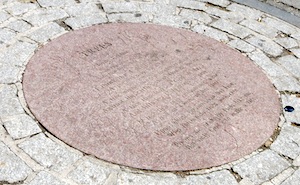 Being an "English major for life," I suppose I should have known who Joyce Kilmer was, but I admit I didn't. I'd heard the name, but that's it.
Being an "English major for life," I suppose I should have known who Joyce Kilmer was, but I admit I didn't. I'd heard the name, but that's it.
Better late than never: now I know Joyce Kilmer was a he, and he was the poet who wrote "I think that I shall never see/A poem lovely as a tree." A famous Catholic writer and lecturer in his time, he was killed in World War I on the Western front in 1918 at the age of 31. And just a few blocks from Yankee Stadium, Joyce Kilmer Park in the Melrose/Morrisania section of The Bronx honors his memory – though he doesn't seem to have had any particular connection to the borough.
The former Concourse Plaza is a tall rectangle like a miniature Central Park, its southern and most dramatic entrance at 161st Street. Most of the park lies on flat terrain, but some picturesque rockage greets the visitor approaching from the south.

Because of the circumstances of Kilmer's death, the park named for him fits right in with all the doughboy monuments found in other parks throughout New York City, though there's no graven doughboy image in Joyce Kilmer Park. Nor is there an image of Kilmer, though "Trees" is inscribed into the pavement (see photo, above right).
Instead of a doughboy statue, Joyce Kilmer Park has the Lorelei Fountain, also known as the Heinrich Heine Memorial, and a statue of Louis J. Heintz, the first commissioner of Bronx street improvements and progenitor of the Grand Concourse – a sort of Baron Haussmann of The Bronx.
What a lot of Germanic names in one little paragraph about one humble park! The fountain has an interesting history. Intended for Dusseldorf, the poet Heinrich Heine's hometown, Ernest Herter's sculpture was instead brought here from Germany after objections by, according to the Parks Department, "political groups opposed to Heine's Jewish origins and political views," and erected in 1899 through the largesse of German-Americans – much like the German Fountain in Santiago, Chile. I gather German emigrés of a century ago had a thing about fountains.
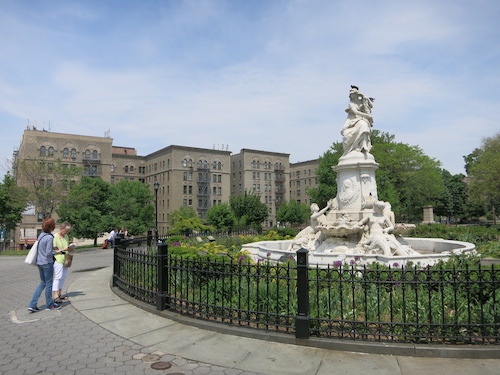
The Lorelei Fountain was the only place I saw tourists on my Bronx parks excursion last week. In the photo above, the two women on the left were looking at the monument while consulting a guidebook. I didn't listen in to see if they were speaking German.
The fountain also attracts a lot of birds, as fountains are wont to do.
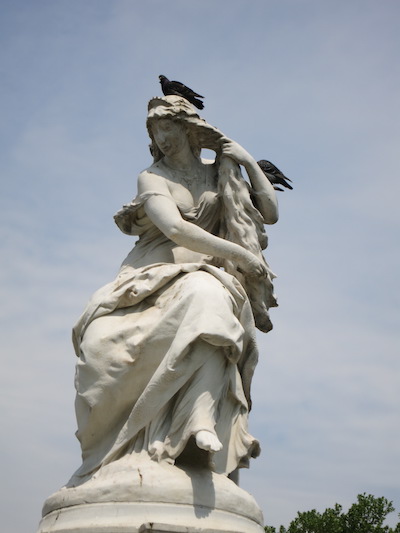
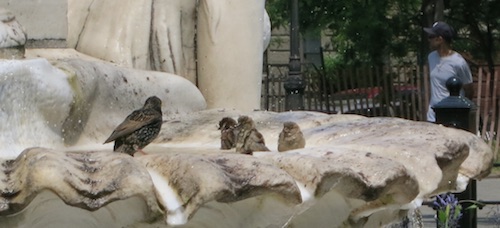
The monument to Louis J. Heintz commemorates "the founding of the progress and prosperity of The Bronx." The sculpture by Pierre Fietu dates from 1909.
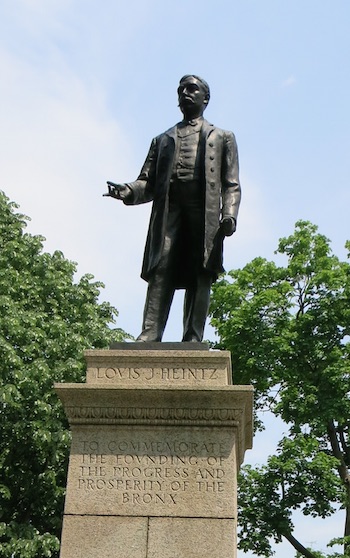
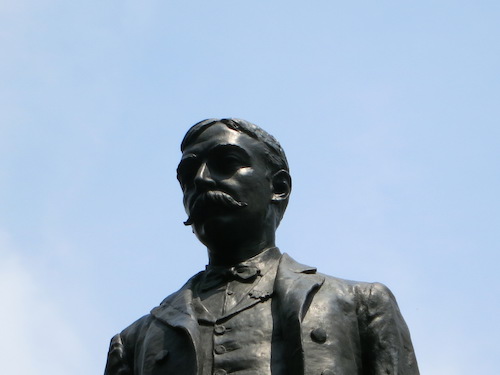
But most of the park is plain old grass and trees, with a playground at the north end.


Four urns once surrounded this little plaza by the playground. And then there were three…

Poets and other writers used to mean a lot more to park visionaries than they do now. There's the Poet's Walk or Literary Walk in Central Park, of course, with its statues of Robert Burns, William Shakespeare, Sir Walter Scott, and the now otherwise forgotten Fitz-Greene Halleck. There's Dante Park. Clement C. Moore Park. And of course there's Underwood Park, named for the typewriter magnate without whose products no one could have typed their poems in the first place.
Fitting words for a city of immigrants:
I had a lovely homeland long ago.
The oak trees
Grew so high there, the violets nodded softly.
It was a dream.
- Heinrich Heine, "Ich hatte einst"
Trite, but true:
I think that I shall never see
A poem lovely as a tree.
- Joyce Kilmer, "Trees"
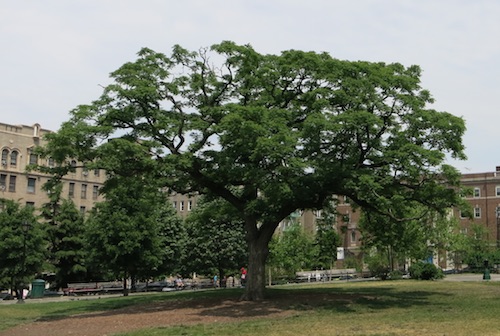
No comments:
Post a Comment